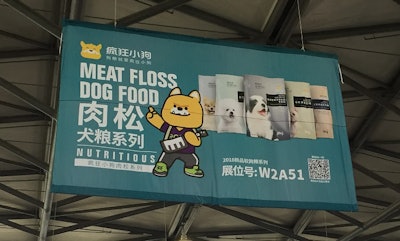
The conventional wisdom among experts tracking the dynamic Chinese pet food market is that pet owners in China prefer brands from outside the country, due to the perception that those products are safer and of higher quality than pet foods made in China. However, that situation may be changing, based on recent sales figures and reports by Chinese media.
For example, Global Times has reported that some consumers in China are now considering boycotting U.S. pet food brands because of their higher prices brought on by a 25 percent tariff, imposed by the Chinese government as part of the trade war under way with the U.S. Some Chinese pet owners also blame the U.S. for starting the war.
Another factor could be that Chinese brands are incorporating many of the product features and claims associated with premium pet foods from other parts of the world. As a result, domestic brands now own a 34 percent share of the market, up from just 26 percent a year ago, and the highest growth for those brands is occurring in premium-priced products.
Premium, natural, grain-free pet foods on the rise
That data and information came from George He, account director with GfK Retail and Technology China, as part of his presentation for Petfood Forum China 2018 on August 21 in Shanghai. While the headline was that the Chinese pet food market has reached sales of US$2.2 billion (including all brands and channels), representing a 21 percent year-over-year rise, delving a few layers down into his data helps fill in more details.
For instance, online pet food sales show the greatest growth, at 30.8 percent, and now represent 51.8 percent of the market. Yet sales in traditional brick-and-mortar outlets (“offline” channels) are still increasing by double digits, 12.1 percent, and with a 48.2 percent share of the market, these outlets provide valuable insights.
At outlets in Beijing and Shanghai, the two largest cities in China by far, the average price of pet food per kilo sold is approaching 50 RMB (US$7.34) and steadily rising. Pet foods priced at more than 75 RMB per kilo (US$11.01) own the largest market share, at 34 percent, up from 31 percent a year ago. The next largest share belongs to the 60+ to 75 RMB per kilo category (US$8.81 to $11.01), at 18.2 percent. This comprises both foreign and domestic brands.
In addition, shares of natural and grain-free pet foods have increased to 29 percent and 10 percent, respectively, up from 27 and 6 percent a year ago. According to Wang Jinquan, Ph.D., associate professor with the Feed Research Institute of the Chinese Academy of Agricultural Sciences and another speaker at Petfood Forum China, natural claims on pet food in China started becoming visible only in 2015, along with fresh meat claims, with grain free joining them in 2016.
Wang also focused on domestic brands in his presentation, saying 15 companies had revenues exceeding 100 million RMB (US$14.68 million) in 2017.
Will stricter pet food labeling regulations be enforced?
The meat emphasis among pet food brands in China — as elsewhere around the world — was fully on display at Pet Fair Asia, a large trade show following Petfood Forum China. Exotic proteins like venison showed up in pet treats, along with other novel pet food ingredients like mulberry.
Much of Wang’s presentation covered new pet food regulations in China, which he helped develop. He said pet food labeling was a key component of the regulations and shared tables with specific amounts of various ingredients required to declare them on a label. For example, for a pet food to be labeled as a Chicken Formula, it must contain at least 26 percent chicken. Declarations of moisture content are also required.
The regulations went into effect June 1, with a transition period extending into 2019 for some components. It will be interesting to see at next year’s Pet Fair Asia whether labels have changed much. One market observer I talked to during the show said he doubts the regulations will be enforced to any significant level — unless a serious incident occurs.
In that case, there would likely be an outcry from Chinese consumers; and despite the government being totalitarian, it does seem to address its citizens’ concerns over product safety and health. As in capitalist markets, pet owners may very well dictate how the Chinese pet food market and its products continue to develop.
















